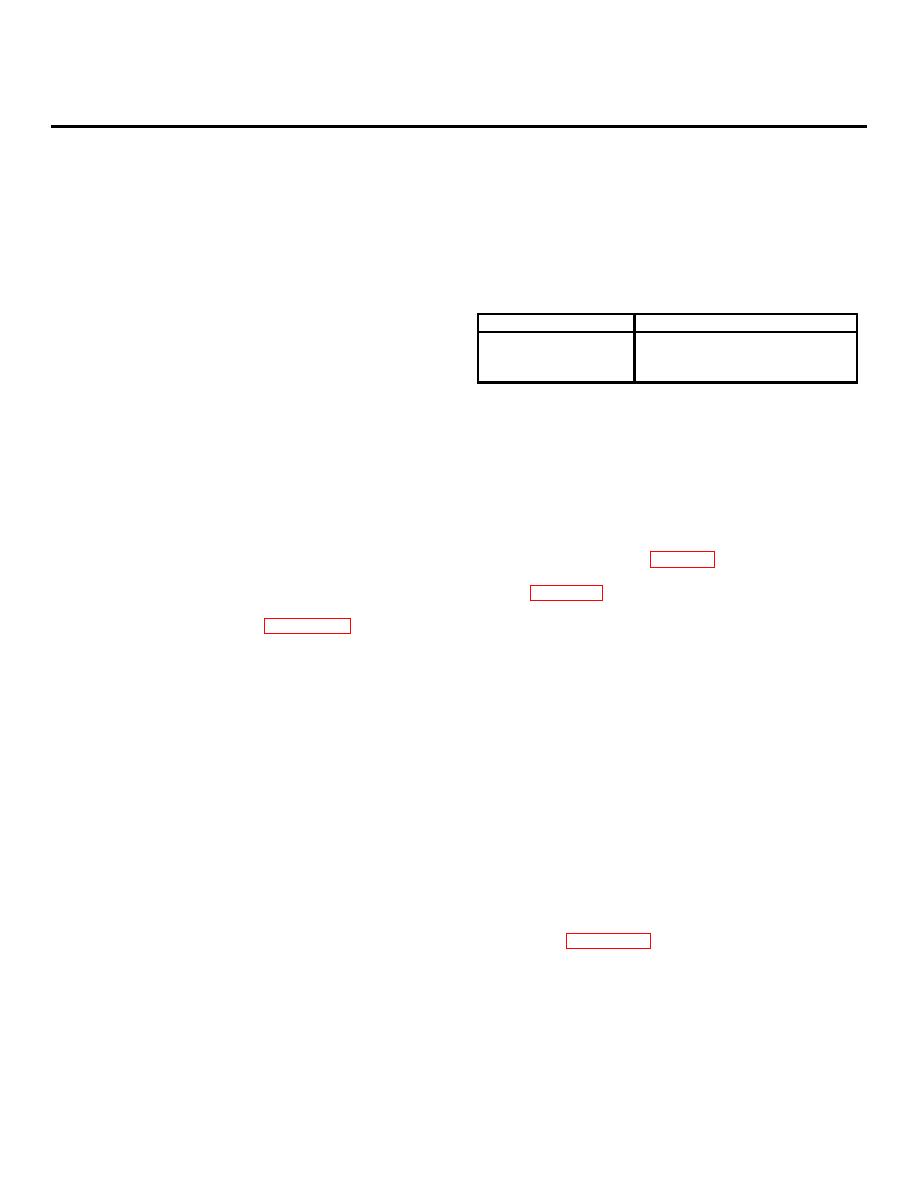 |
|||
|
|
|||
|
Page Title:
CHAPTER 3 OPERATING INSTRUCTIONS |
|
||
| ||||||||||
|
|
 CHAPTER 3
OPERATING INSTRUCTIONS
Section I. CONTROL
The transceiver has one control, RANGE control (fig. 1-
3-1. General
1) R5 which sets the transceiver gain level optimizing
detection performance. This control is used only during
The Processor/transceiver ultrasonic motion signal
installation to compensate for varying conditions and
consists of one processor and from one to twenty
during periods of maintenance.
transceivers. The processor, when operating, is a
closed unit and contains no operating controls or
Table 3-1. Control.
instruments. The transceiver when operating is a closed
unit and contains one operating control and no
instruments.
There are no operator/crew controls
Control
Function
associated with this equipment.
Range
R5
Sets the transceiver range sensitivity
level.
3-2. Control
Dial is indexed from 1 to 10.
Section II. OPERATION UNDER USUAL CONDITIONS
3-3. General
a.
Starting
procedure.
Control of the
processor/transceiver ultrasonic motion signal is by
The usual conditions of operation are during the
means of the J-SIIDS control unit. Refer to TM 5-6350-
absence of normal authorized personnel and the
262-14/14.
potential presence of unauthorized personnel in the
surveillance area.
b.
Initial adjustments.
Initial adjustment of
RANGE control R5 (fig. 1-1) (transceiver) was
3-4. Operation
performed following the installation and during the walk
test in Chapter 2. No further adjustments are required.
Once the processor and the transceivers have been
installed and checked out (Chapter 2), the only
c. Operating procedure. Refer to TM 5-6350-
remaining procedure of operation is to establish the
262-14/14 for operating procedures.
operating time periods for the equipment.
Section III. OPERATION UNDER UNUSUAL CONDITIONS
available. Operation under these conditions should be
3-5. Unusual operating conditions.
held to an absolute minimum.
Unusual conditions of operation may occur when
NOTE
changes in the protected area take place. Relocation of
metal files, cabinets, or partitions may result in changes
in the surveillance pattern area. Decorations of metallic
Installation of air moving equipment,
foil such as those used during winter holiday periods
radiators, heavy machinery, telephones,
could result in nuisance alarms.
paging systems, etc. alters the noise or
turbulence associated with an existing
3-6. Emergency operation.
preinstalled transceivers. If this occurs
recheck of the noise level and a walk
Operation with the knowledge of incomplete surveillance
test (para. 2-11) is required to insure
coverage or faulty tamper circuit (non-malicious), may
adequate surveillance coverage.
be continued knowing that 100% protection is not
3-1
|
|
Privacy Statement - Press Release - Copyright Information. - Contact Us |